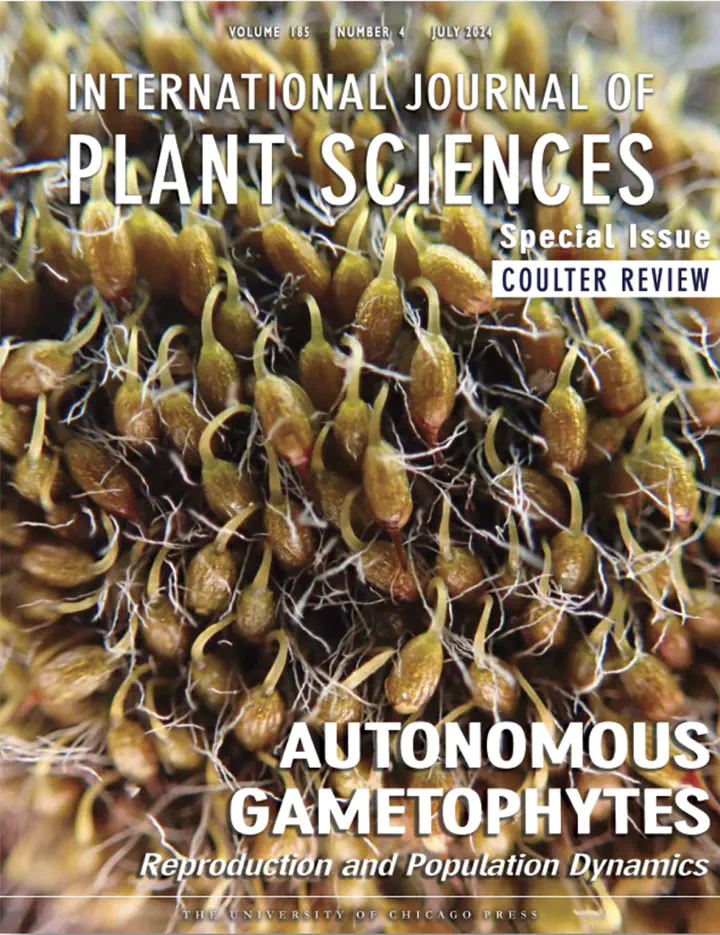 Our cover for the July 2024 issue.
Our cover for the July 2024 issue.Abstract
Bryophytes (hornworts, liverworts, and mosses) have a life cycle similar to that of early land plants and that differs dramatically from extant sporophyte-dominant plants. The bryophyte life cycle, characterized by autonomous gametophytes (and dependent sporophytes), has profound impacts on reproductive biology, specifically: (1) the retention of ancestral swimming sperm, (2) U/V sex chromosomes, (3) sexual system diversity, (4) sexual dimorphism, (5) sexual conflict, and (6) population dynamics. In this review, we summarize recent and foundational findings in these focal areas, and contextualize bryophyte reproduction within the reproductive patterns and processes of land plants at large. Furthermore, we synthesize research in these focal areas of bryophyte reproductive biology to hypothesize how they may contribute to the extreme sex ratio biases common in bryophytes. Multiple mechanisms have been proposed to explain bryophyte sex ratio biases, ranging from meiotic sex ratio variation to differential growth and survival of the sexes, and it is likely that multiple factors related to the unique biology of bryophytes interact to produce observed sex ratios. The gametophyte- dominant life cycle of bryophytes has proven to be a successful way of life, given that it has persisted for hundreds of millions of years. However, many features of bryophyte reproduction are associated with higher extinction risk, especially under environmental change. Better understanding the controls on bryophyte reproductive patterns and the widespread effects of the gametophyte-dominant life cycle allows us to gain insight on land plant evolution and to better conserve and protect the diversity of extant land plants.